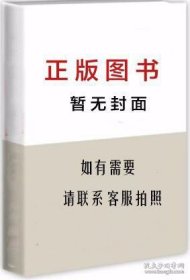
英语语言学实践教程
正版保障 假一赔十 可开发票
¥ 7.72 2.0折 ¥ 39 全新
库存5件
作者李卫东,李英
出版社天津大学出版社
ISBN9787561855362
出版时间2016-03
装帧平装
开本16开
定价39元
货号8774973
上书时间2024-11-09
- 最新上架
商品详情
- 品相描述:全新
- 商品描述
-
目录
Chapter 1 Introduction
1.1 Language
1.1.1 What is language?
1.1.2 Design features of language
1.1.3 The functions of language
1.2 Linguistics
1.2.1 Definition of linguistics
1.2.2 Short history of modem linguistics
1.2.3 Main branches of linguistics
1.2.4 Why should we study linguistics?
1.3 Some important distinctions in linguistics
1.3.1 Descriptive approach vs. prescriptive approach
1.3.2 Synchronic vs. diachronic
1.3.3 Langue vs. parole
1.3.4 Competence vs. performance
1.3.5 Linguistic potential vs. linguistic behavior
Exercises
References
Chapter 2 Schools of Modern Linguistics and Modern Linquists
2.1 Historical linguistics
2.2 Structuralism
2.2.1 F. de Saussures Theories
2.2.2 Halliday and Systemic Functional Grammar
2.3 Generativism
2.3.1 Generative linguistics
2.3.2 Chomskys theory
2.4 Other linguistic theories in late half of the 20th century
Exercises
References
Chapter 3 Speech Sounds
3.1 Basic concepts and definitions
3.1.1 Speech organs
3.1.2 Phonetics vs. phonology
3.2 IPA
3.3 Segment
3.3.1 Phone, phoneme and allophone
3.3.2 Consonants
3.3.3 Vowels
3.4 Phonology
3.4.1 Coarticulation and phonetic transcriptions
3.4.2 Phonological process and phonological rules
3.4.3 Suprasegmental features
Exercises
References
Chapter 4 Morphology
4.1 What is morphology?
4.2 Word, lexeme, lexicon and vocabulary
4.2.1 "Three senses of "Word"
4.2.2 Classification of "Word"
4.2.3 Internal structure of "Word"
4.3 Inflection and word formation
4.3.1 Inflection
4.3.2 Word formation
4.4 Semantic change
4.5 Orthographic change
Exercises
References
Chapter 5 Syntax
5.1 What is syntax ?
5.2 The traditional approach
5.2.1 Number
5.2.2 Gender
5.2.3 Case
5.2.4 Countability
5.2.5 Tense and aspect
5.2.6 Voice
5.2.7 Mood
5.2.8 Person
5.2.9 Concord and government
5.3 The structural approach
5.3.1 Syntagmatic relation
5.3.2 Paradigmatic relation
5.3.3 Relation of co-occurrence
5.3.4 Immediate constituent analysis
5.3.5 Endocentric construction and exocentric construction
5.4 The generative grammar
5.4.1 Classical theory
5.4.2 The standard theory
5.4.3 The summary of TG grammar
Exercises
References
Chapter 6 Semantics
6.1 What is semantics?
6.2 Approaches to meaning
6.2.1 The Referential Theory
6.2.2 The semantic triangle theory
6.3 Word meaning
6.3.l Sense and reference
6.3.2 Types of meanings
6.3.3 Semantic relations between words
6.3.4 Componential analysis
6.4 Sentence meaning
6.4.1 An integrated theory
6.4.2 Semantic relations between sentences
Exercises
References
Chapter 7 Pragmatics
7.1 Some basic notions
7.1.1 What is pragmatics?
7.1.2 Pragmatics and semantics
7.1.3 Context
7.1.4 Sentence meaning and utterance meaning
7.2 Speech act theory
7.2.1 Performatives and constatives
7.2.2 A theory of the illocutionary act
7.2.3 Indirect speech act
7.3 The theory of conversational implicature
7.3.1 The cooperative principle and its maxims
7.3.2 Violation of the maxims
7.4 The politeness principle and irony
7.5 Neo-Gricean conversationalimplicature theory
7.5.1 Relevance theory
7.5.2 The Q- and R-principles
7.5.3 The Q-, I- and M-principles
Exercises
References
Chapter 8 Psycholinguistics
8.1 Language acquisition
8.1.1 First language acquisition
8.1.2 Second language acquisition
8.2 Language comprehension
8.2.1 Sound comprehension
8.2.2 Word comprehension
8.2.3 Sentence comprehension
8.2.4 Text comprehension
8.3 Language production
8.3.1 Articulation stage
8.3.2 Self-monitoring stage
Exercises
References
Chapter 9 Language, Culture and Society
9.1 Language and culture
9.1.1 What is culture?
9.1.2 The relationship between language and culture
9.1.3 Sapir-Whorf Hypothesis
9.1.4 Linguistic evidence of cultural differences
9.1.5 Intercultural communication
9.2 Language and society
9.2.1 The relationship between language and society
9.2.2 What is sociolinguistics?
9.2.3 Varieties of English
Exercises
References
Chapter 10 Applied Linguistics
10.1 Introduction
10.2 Theories of foreign language teaching
10.2.1 The grammar-translation method
10.2.2 The direct method
10.2.3 The audiolingual method
10.2.4 Cognitive approach
10.2.5 Communicative language teaching
10.3 Syllabus design
10.3.1 Curriculum and syllabus
10.3.2 Types of syllabus
10.3.3 Rules for syllabus design
10.4 Contrastive analysis and error analysis
10.5 Testing
10.5.1 Types of language tests
10.5.2 Qualities of good language tests
Exercises
References
Glossary and Index
内容摘要
李卫东、李英主编的《英语语言学实践教程》涵盖了英语语言学的主要分支,课后练习题精选了各高校英语专业硕士研究生入学考试的试题,在帮助学生
学习英语语言学知识的同时,对他们准备硕士研究生
入学考试也有很大的帮助。本教材由十章组成,内容涵盖语言学导论、当代语言学流派介绍、语音学、音系学、形态学、句法学、语义学、语用学、心理语言
学、语言文化和社会以及应用语言学。每章由四个部分组成。
(1)学习要点。列出本章应着重掌握的名词。
(2)正文内容。简明扼要地介绍本章所涉及的英语语言学理论和知识,并配以简单明了的实例。
(3)课后练习。从各高校英语专业硕士研究生入学考试试卷中结合本章内容精选试题,主要题型包括单选题、填空题、判断题、名词解释、简答题、论述题等。理论和实践相结合,有利于学生融会贯通。
(4)参考文献。每章后附有参考文献,提供可进一步阅读的书籍,有利于学生继续深入学习与本章相关的内容。
精彩内容
李卫东、李英主编的《英语语言学实践教程》涵 盖了英语语言学的主要分支,课后练习题了各高 校英语专业硕士研究生入学考试的试题,在帮助学生 学习英语语言学知识的同时,对他们准备硕士研究生 入学考试也有很大的帮助。本教材由十章组成,内容 涵盖语言学导论、当代语言学流派介绍、语音学、音 系学、形态学、句法学、语义学、语用学、心理语言 学、语言文化和社会以及应用语言学。每章由四个部 分组成。
(1)学习要点。列出本章应着重掌握的名词。
(2)正文内容。简明扼要地介绍本章所涉及的英 语语言学理论和知识,并配以简单明了的实例。
(3)课后练习。从各高校英语专业硕士研究生入 学考试试卷中结合本章内容试题,主要题型包括 单选题、填空题、判断题、名词解释、简答题、论述 题等。理论和实践相结合,有利于学生融会贯通。
(4)参考文献。每章后附有参考文献,提供可进 一步阅读的书籍,有利于学生继续深入学习与本章相 关的内容。




















以下为对购买帮助不大的评价